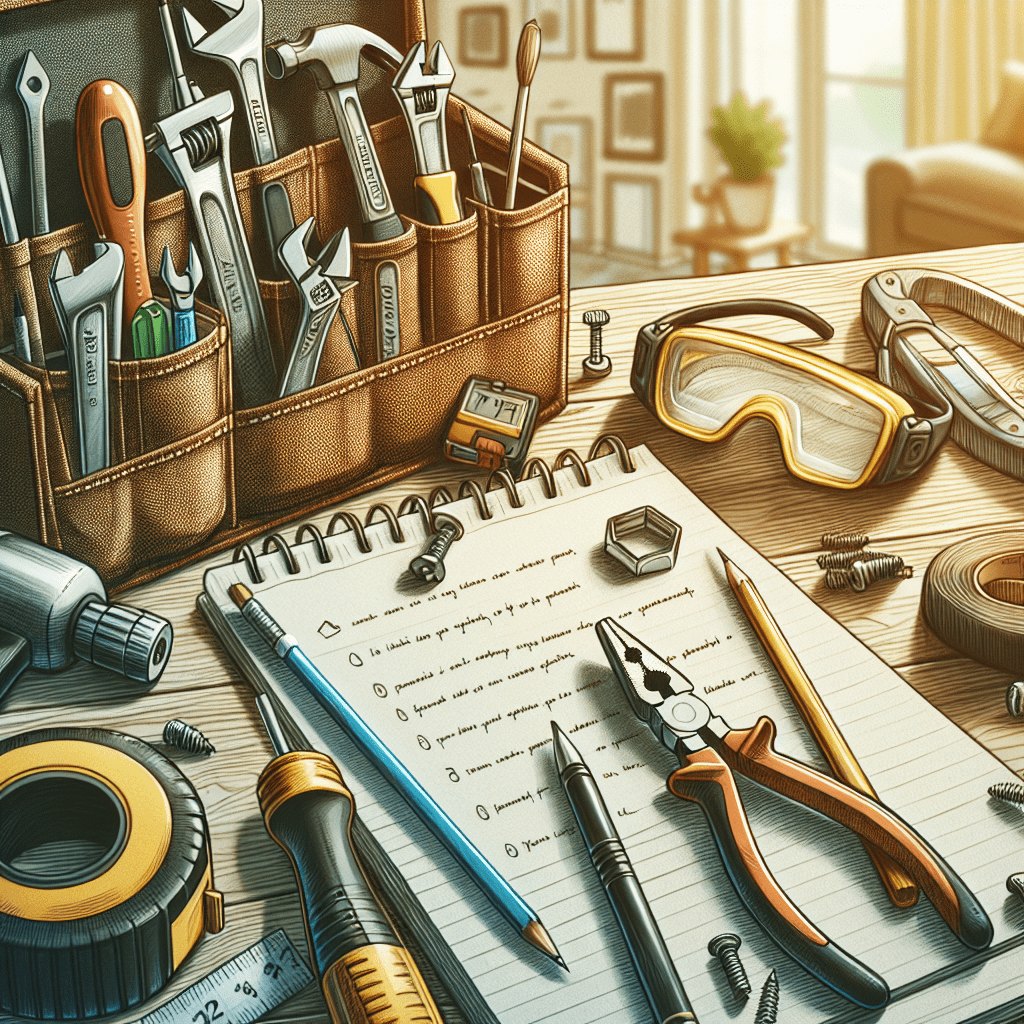Are you tired of spending money on costly repairs for things around your home? Whether it’s a leaky faucet, a broken appliance, or a squeaky door, there are many DIY repair tips that can help you save both time and money. By learning some basic repair skills, you can tackle these projects on your own and avoid the need to hire a professional. In this article, we will discuss 10 DIY repair tips that can save you money and time.
1. Fixing a Leaky Faucet
One of the most common household repairs is fixing a leaky faucet. This problem can waste a lot of water and drive up your utility bills. To fix a leaky faucet, start by turning off the water supply. Then, disassemble the faucet and replace any worn-out parts, such as the O-ring or washer. Reassemble the faucet and turn the water supply back on to check for leaks.
2. Repairing a Squeaky Door
A squeaky door can be annoying and disrupt the peace in your home. To fix a squeaky door, start by applying some lubricant to the hinges. You can use WD-40 or a similar lubricant to silence the squeak. If lubricant doesn’t work, you may need to tighten the screws on the hinges or replace them altogether.
3. Patching Drywall Holes
If you have holes in your drywall from hanging pictures or accidents, you can easily patch them up yourself. Start by cleaning the area around the hole and applying a patching compound. Smooth out the compound and let it dry. Once dry, sand the area and paint over it to match the rest of the wall.
4. Replacing a Broken Tile
If you have a broken tile in your kitchen or bathroom, you can replace it without calling a professional. Start by removing the grout around the broken tile with a grout saw. Gently chisel out the broken tile and clean up the area. Apply new adhesive to the back of the replacement tile and press it into place. Once the adhesive dries, reapply grout around the tile.
5. Cleaning Your Gutters
Regularly cleaning your gutters can prevent water damage to your home. Start by using a ladder to access the gutters and remove any debris, such as leaves and twigs. You can use a trowel or garden hose to flush out the gutters. Make sure the downspouts are clear and flowing properly to prevent water buildup.
6. Fixing a Running Toilet
If your toilet is constantly running, it can waste a significant amount of water. To fix a running toilet, start by removing the tank lid and checking the flapper and fill valve. Adjust the float or replace the parts if needed. You can also check for any leaks or cracks in the tank that may need to be repaired.
7. Unclogging a Drain
If you have a clogged sink or shower drain, you can unclog it yourself without the need for harsh chemicals. Start by removing the drain cover and using a plunger to dislodge the clog. If the plunger doesn’t work, you can try using a drain snake to remove the blockage. Once the drain is clear, run hot water to flush out any remaining debris.
8. Fixing a Broken Appliance
If one of your appliances stops working, you may be able to repair it yourself. Start by checking the power source and making sure it’s plugged in. You can also consult the appliance manual for troubleshooting tips. If you’re still having trouble, you can search online for DIY repair guides or contact the manufacturer for assistance.
9. Sealing Leaky Windows
Leaky windows can let in drafts and drive up your heating and cooling costs. To seal leaky windows, start by applying weatherstripping around the frames to prevent drafts. You can also use caulk to seal any gaps or cracks around the window. This will help keep your home comfortable and energy-efficient.
10. Maintaining Your HVAC System
Regular maintenance of your HVAC system can prolong its lifespan and improve its efficiency. Start by changing the air filters regularly to ensure proper airflow. You can also clean the vents and coils to remove dust and debris. If you’re comfortable, you can also inspect the ductwork for leaks or damage and seal them as needed.
Conclusion
By learning some basic DIY repair skills, you can save both time and money on common household repairs. Whether it’s fixing a leaky faucet, patching drywall holes, or maintaining your HVAC system, these tips can help you tackle projects with confidence. Remember, safety should always come first, so make sure to take proper precautions and consult a professional if needed.
FAQs
1. Is DIY repair safe?
DIY repair can be safe as long as you take proper precautions and follow instructions carefully. If you’re unsure about a project, it’s best to consult a professional.
2. How can I learn more DIY repair skills?
You can find numerous resources online, such as videos and tutorials, to help you learn new DIY repair skills. You can also attend workshops or classes in your community.
3. Should I always attempt DIY repairs?
While DIY repairs can save you money, there are some projects that are best left to professionals, such as electrical or structural work. If you’re unsure about a project, it’s best to seek professional help.
TIP:
Before starting any DIY repair project, make sure you have the right tools and materials on hand. This will help you complete the project efficiently and safely.
#DIY #Repair #Tips #Save #Money #Time

